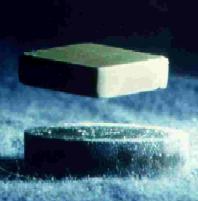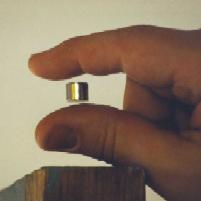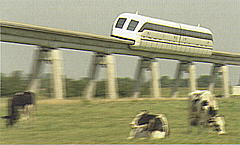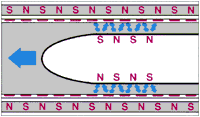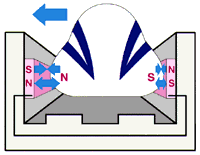| As you might well know,
all matter in the universe consists of small particles called atoms and
each atom contains electrons that circle around a nucleus. This is how
the world is made. If one places an atom (or a large piece of a matter
containing billions and billions of atoms) in a magnetic field, electrons
doing their circles inside do not like this very much. They alter their
motion in such a way as to oppose this external influence. Incidentally,
this is the most general principle of Nature: whenever one tries to change
something settled and quiet, the reaction is always negative (you can easily
check out that this principle also applies to the interaction between you
and your parents). So, according to this principle, the disturbed electrons
create their own magnetic field and as a result the atoms behave as little
magnetic needles pointing in the direction opposite to the applied field.
As you probably saw many times when playing with magnets, magnets push
each other away if you try to bring together their like poles, for example,
two north or two south poles. Similarly, the north pole of the external
field will try to push away the “north poles” of magnetized atoms. Our
magnet creates a very large magnetic field (about 100 to 1000 times larger
than school or household magnets). In this field, all the atoms inside
the frog act as very small magnets creating a field of about 2 Gauss (although
very small, such a field can still be detected by a
compass). One may say
that the frog is now built up of these tiny magnets all of which are repelled
by the large magnet. The force, which is directed upwards, appears to be
strong enough to compensate the force of gravity (directed downwards) that
also acts on every single atom of the frog. So, the frog’s atoms do not
feel
any force at all and
the frog floats as if it were in a spacecraft.
Three basic schemes
using various aspects of diamagnetism allow the true levitation:
|



